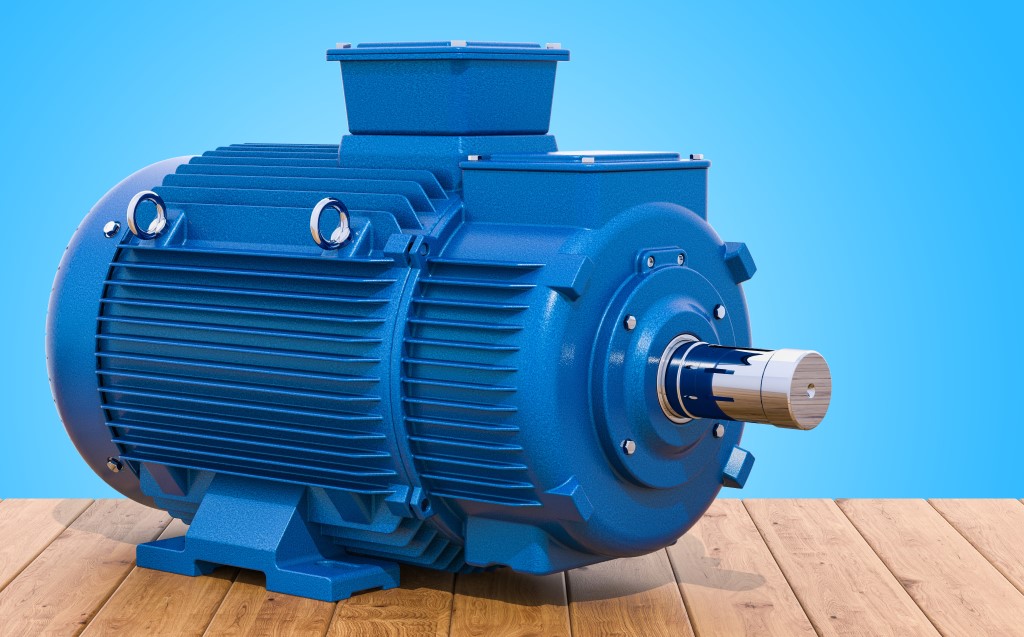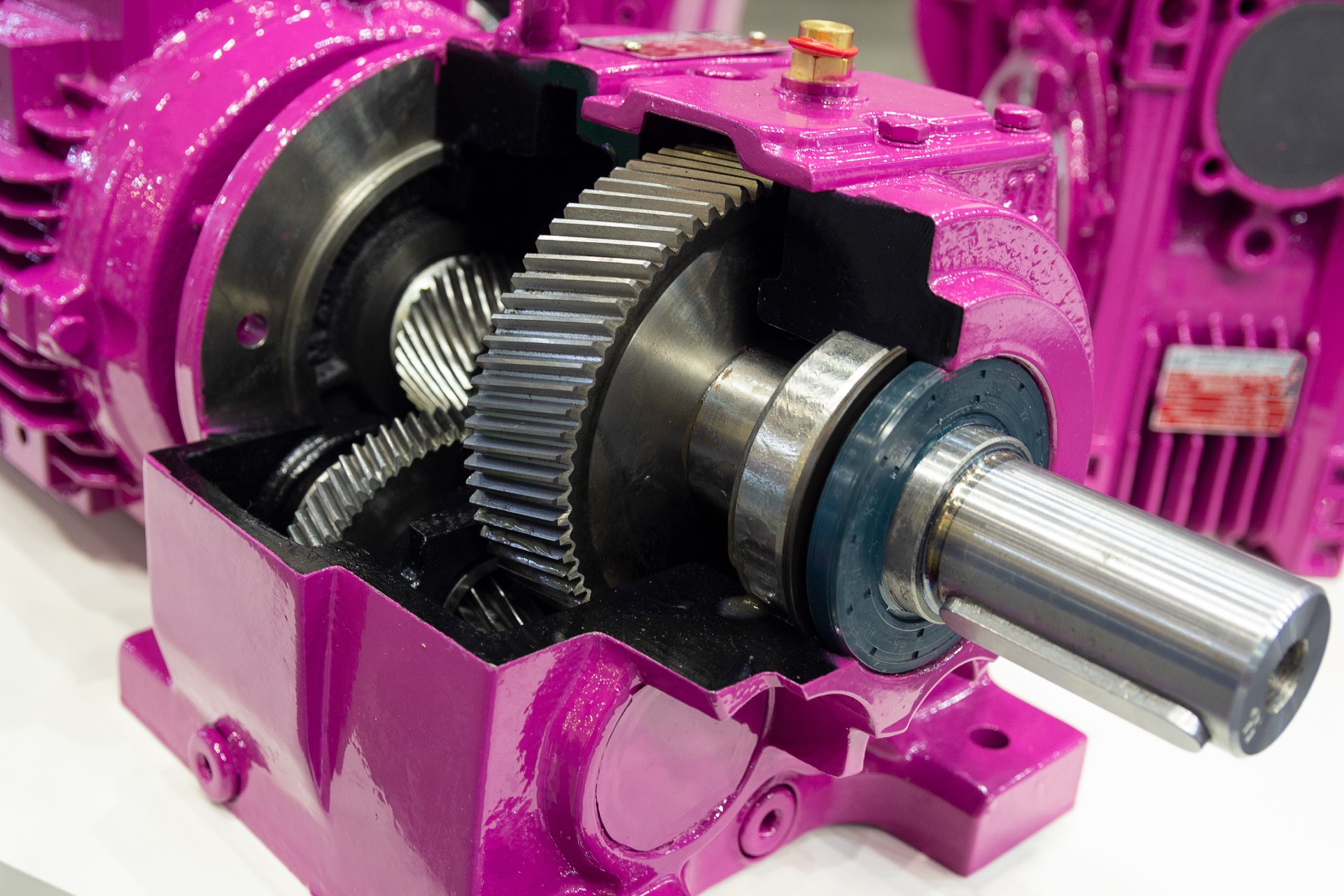Electric Motor Efficiency Calculation: Essential Formulas for Choosing a Motor
Are you looking for an electric motor that meets your power and size requirements but don’t know where to start?
To make an informed decision, it is essential to understand the efficiency calculations for electric motors.
Since electric motors are widely used in the industrial sector, we believe it is important to provide key information on how to choose the right motor based on its construction characteristics, number of phases, speed, and more before reviewing the essential formulas that go hand in hand with this choice.
Choosing the Right Electric Motor
To select the most suitable electric motor, you need to consider several important criteria.
Single-Phase vs. Three-Phase Motor?
The main difference between a single-phase and a three-phase motor lies in the number of electrical supply phases they use. Single-phase motors are often less complex and less expensive than three-phase motors, but they have limited power. In the industrial sector, three-phase motors are more common as they deliver higher power and generally have better overall performance.
Synchronous or Asynchronous Motor?
Synchronous motors are often used in applications requiring constant and precise speed, such as alternators in power plants. However, they generally require an external power source for startup to operate synchronously.
Asynchronous motors, on the other hand, are widely used due to their simplicity, relatively low cost, and ability to handle variable loads. They are commonly found in household appliances, electric pumps, fans, and more. These motors are also known as “induction motors.”
Properly Sized Motor for Better Efficiency
To achieve optimal motor performance, it must be correctly sized. A motor that is too small for the required load will result in significant Joule losses, reducing efficiency. The motor’s size also affects heat dissipation; a larger motor generally dissipates heat more effectively, improving efficiency.
Electric motors consume a lot of energy. If you are looking for a cost-effective solution, opt for high-efficiency motors (at least IE3-rated) to reduce your energy bills.
Choosing the Right Construction Options
An electric motor offers various construction options that vary by manufacturer and usage criteria.
For example, you may need specific protection features. Ensure that the IP protection rating and insulation class match the intended use, as some environments are more humid or contain more dust.
IP ratings indicate a motor’s resistance to water and dust. For instance:
- An IP55 motor is protected against dust accumulation and water jets.
- A motor with an insulation class F can withstand temperatures up to 155°C.
When an electric motor is combined with a brake unit, it is called a “brake motor.” Brake motors are used in lifting and travel equipment or machine tools. Machine tools are utilized in various industries, including aerospace, automotive, construction, and electronics.
Adding a variable speed drive allows you to adjust the frequency of an asynchronous motor, which is typically designed to run at a fixed speed. (This is useful for applications like pumps or fans.)
Let Our Electric Motor Specialists Help You Identify Your Needs
Essential Formulas for Choosing a Motor
Selecting an electric motor depends on various factors, such as the load to be driven, required speed, necessary torque, available power supply, and more.
Here are some key formulas to consider when selecting an electric motor:
Motor Power Formulas
Absorbed Power Formula
The power absorbed by an electric motor corresponds to the electrical energy absorbed from the electrical network. This absorbed power can be calculated using the following formula.
P_absorbed = V ⋅ I ⋅ cos(ϕ)
Where:
- P_absorbed = absorbed power in watts (W)
- V = voltage in volts (V)
- I = current in amperes (A)
- cos(ϕ) = power factor
This formula represents the active electrical power absorbed by the motor. The power factor (cos(ϕ)) indicates the proportion of electrical power that performs useful work compared to the total power drawn from the network. It ranges from 0 to 1, and ideally, it should be close to 1 to maximize motor efficiency and minimize reactive power losses.
Delivered Power or Mechanical Power Formula
The power delivered by an electric motor depends on the torque (rotary force) produced by the motor and its angular speed. The formula for mechanical power (Pm) is as follows:
P_m = τ ⋅ ω
Where:
- P_m = mechanical power in watts (W)
- τ = torque in newton-meters (N·m)
- ω = angular velocity in radians per second (rad/s)
This formula represents the mechanical power output of the motor per unit of time.
It’s important to note that this formula represents the ideal mechanical power without taking into account losses (such as friction losses, electrical losses, etc.) which can reduce the overall efficiency of the motor. To obtain a more precise measurement of power output, you’ll probably need to use other types of specific tools.
Reactive Power Formula
Reactive power is associated with the phase difference between voltage and current in a circuit. It does not perform useful work but is necessary to maintain the magnetic field in induction motors and contributes to energy losses in the electrical grid.
Here’s how to calculate it:
Maintaining a good power factor is essential to avoid unnecessary energy losses and optimize motor efficiency.
Torque Calculation Formula
To calculate an electric motor’s torque, use a modified version of the mechanical power formula:
τ = P_m / ω
Where:
- τ = torque in newton-meters (N·m)
- P_m = mechanical power in watts (W)
- ω = angular speed in radians per second
Motor Efficiency Formula
To measure motor efficiency, determine what proportion of the electrical energy supplied to the motor is converted into useful mechanical energy:
η = P_output / P_input
- η = motor efficiency (expressed as a percentage)
- P_output = mechanical output power in watts
- P_input = electrical input power in watts
Note: Efficiency is usually expressed as a percentage, so multiply η by 100.
Rotational Speed Calculation Formula
The rotational speed of an electric motor, or synchronous speed, is calculated based on electrical frequency and the number of pole pairs in the motor:
- Synchronous motor speed = frequency (Hz) / number of pole pairs
- Asynchronous motor speed = frequency (Hz) / number of pole pairs – slip
Slip is the difference between actual speed and synchronous speed. It is calculated using the following equation:
g=(n−n’)/n
- n = synchronous speed
- n’ = rotor speed
This results in speed measured in revolutions per second (rps), which is then multiplied by 60 to obtain revolutions per minute (rpm).
Need Advice? Consult Our Electric Motor Specialists
In conclusion, to achieve the expected efficiency in your operations requiring motion generation, it is crucial to purchase electric motors designed for your specific applications. Applying the formulas above can help guide your choice.
That said, to ensure you select the right type of electric motor, trust a team that also specializes in electric motor repair.
In addition to selling motors from top brands, we also offer electric motor repair and maintenance services, giving you peace of mind.
Contact us for any inquiries!




